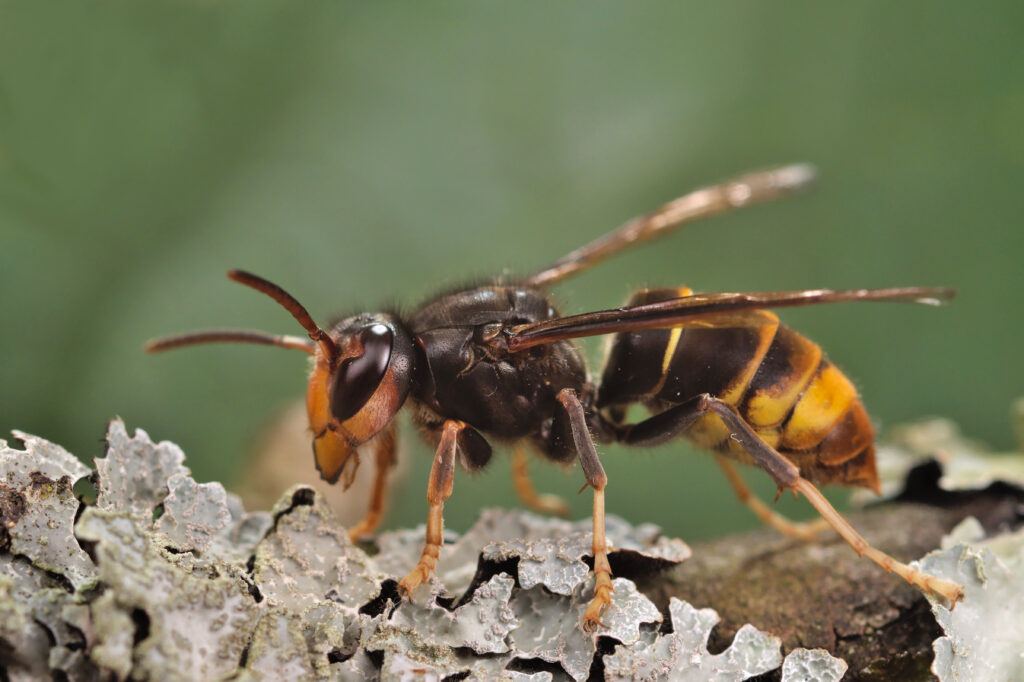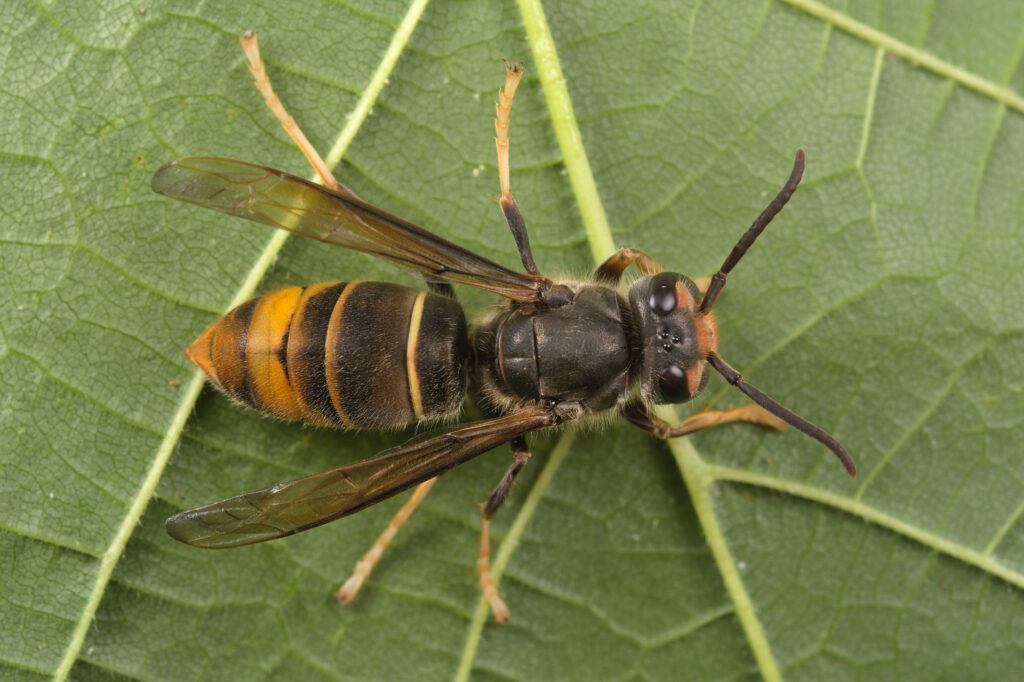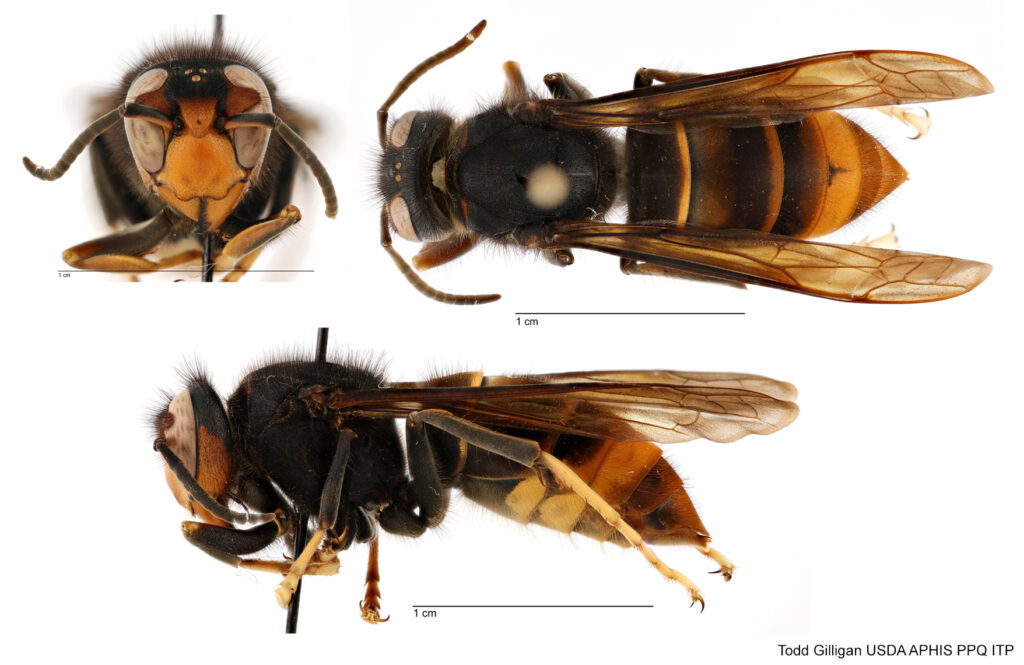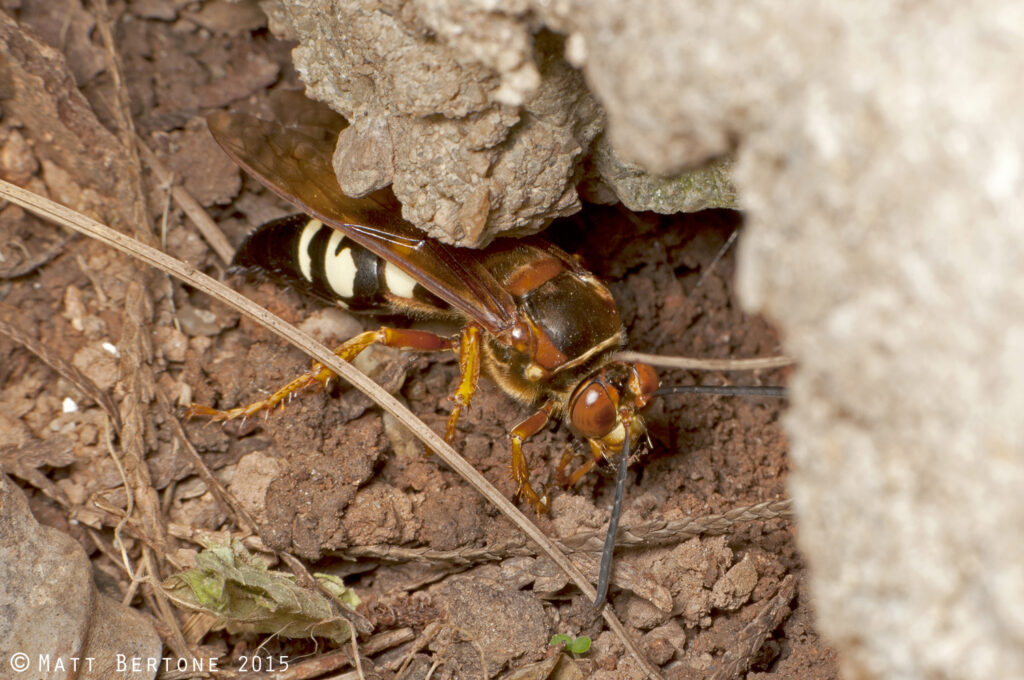Yellow-Legged Hornet Found in Georgia
go.ncsu.edu/readext?951942
en Español / em Português
El inglés es el idioma de control de esta página. En la medida en que haya algún conflicto entre la traducción al inglés y la traducción, el inglés prevalece.
Al hacer clic en el enlace de traducción se activa un servicio de traducción gratuito para convertir la página al español. Al igual que con cualquier traducción por Internet, la conversión no es sensible al contexto y puede que no traduzca el texto en su significado original. NC State Extension no garantiza la exactitud del texto traducido. Por favor, tenga en cuenta que algunas aplicaciones y/o servicios pueden no funcionar como se espera cuando se traducen.
Português
Inglês é o idioma de controle desta página. Na medida que haja algum conflito entre o texto original em Inglês e a tradução, o Inglês prevalece.
Ao clicar no link de tradução, um serviço gratuito de tradução será ativado para converter a página para o Português. Como em qualquer tradução pela internet, a conversão não é sensivel ao contexto e pode não ocorrer a tradução para o significado orginal. O serviço de Extensão da Carolina do Norte (NC State Extension) não garante a exatidão do texto traduzido. Por favor, observe que algumas funções ou serviços podem não funcionar como esperado após a tradução.
English
English is the controlling language of this page. To the extent there is any conflict between the English text and the translation, English controls.
Clicking on the translation link activates a free translation service to convert the page to Spanish. As with any Internet translation, the conversion is not context-sensitive and may not translate the text to its original meaning. NC State Extension does not guarantee the accuracy of the translated text. Please note that some applications and/or services may not function as expected when translated.
Collapse ▲
A yellow-legged hornet (Vespa velutina). Photo by Gilles San Martin licensed under CC BY-SA 2.0
As if we needed another large wasp to strike fear in residents of the US, the state of Georgia is reporting the detection of a single specimen of the yellow-legged hornet (Vespa velutina) near the city of Savannah. There are no reports yet of an active colony, but the folks down there are busy investigating.
Concerns about this hornet stem from their potential to kill honey bees, as well as establish large colonies of stinging insects. This species creates large paper nests in trees and eaves of human structures, much like our native bald-faced hornets (Dolichovespula maculata).
At this time there is no evidence that this wasp is in North Carolina. However, this species has a high potential for invading new areas. Despite this, we have many similar wasps and other insects that might be mistaken for this species. I will be updating these pages with this new species, but for now information on large wasps and their lookalikes can be found on this page.
Characteristics to look for in specimens suspected to be yellow-legged hornets (see images below):
- queens are about 1″ and workers are about 3/4″ long
- base of legs dark, while tips (tarsi) are yellow or pale yellow
- thorax and head mostly dark, though front of face is yellow
- abdomen with dark base (some thin yellow stripes); segments becoming more yellow near the tip of the abdomen

A yellow-legged hornet (Vespa velutina). Photo by Gilles San Martin licensed under CC BY-SA 2.0

Face, dorsal, and lateral views of a yellow-legged hornet (Vespa velutina) specimen. Photos by Todd Gilligan USDA APHIS PPQ ITP
Note that the most common late season, large wasps people will be seeing here in NC are European hornets (Vespa crabro) and cicada killer wasps (Sphecius speciosus). Here are photos of those wasps:

A European hornet (Vespa crabro), a large social, paper-nest-making wasp that has been long-established in North Carolina
If you suspect you have found a yellow-legged hornet, first check carefully the characteristics mentioned above. If you have photos and/or specimens and are still unsure on the ID, please submit them through the NC State Plant Disease and Insect Clinic’s system (instructions can be found here).
Additional resources:
- Giant Northern Hornet (Vespa mandarinia) and Yellow-Legged Hornet (Vespa velutina), Potential Pests of Honey Bees. Clemson University
- USDA: North American Hornet Screening Tool [Vespa velutina fact sheet]. L.S. Kimsey, T.M. Gilligan, J.M Carpenter, A.H. Smith-Pardo, A.J. Redford. Content last updated June 2021
- Vespa velutina. University of Florida



